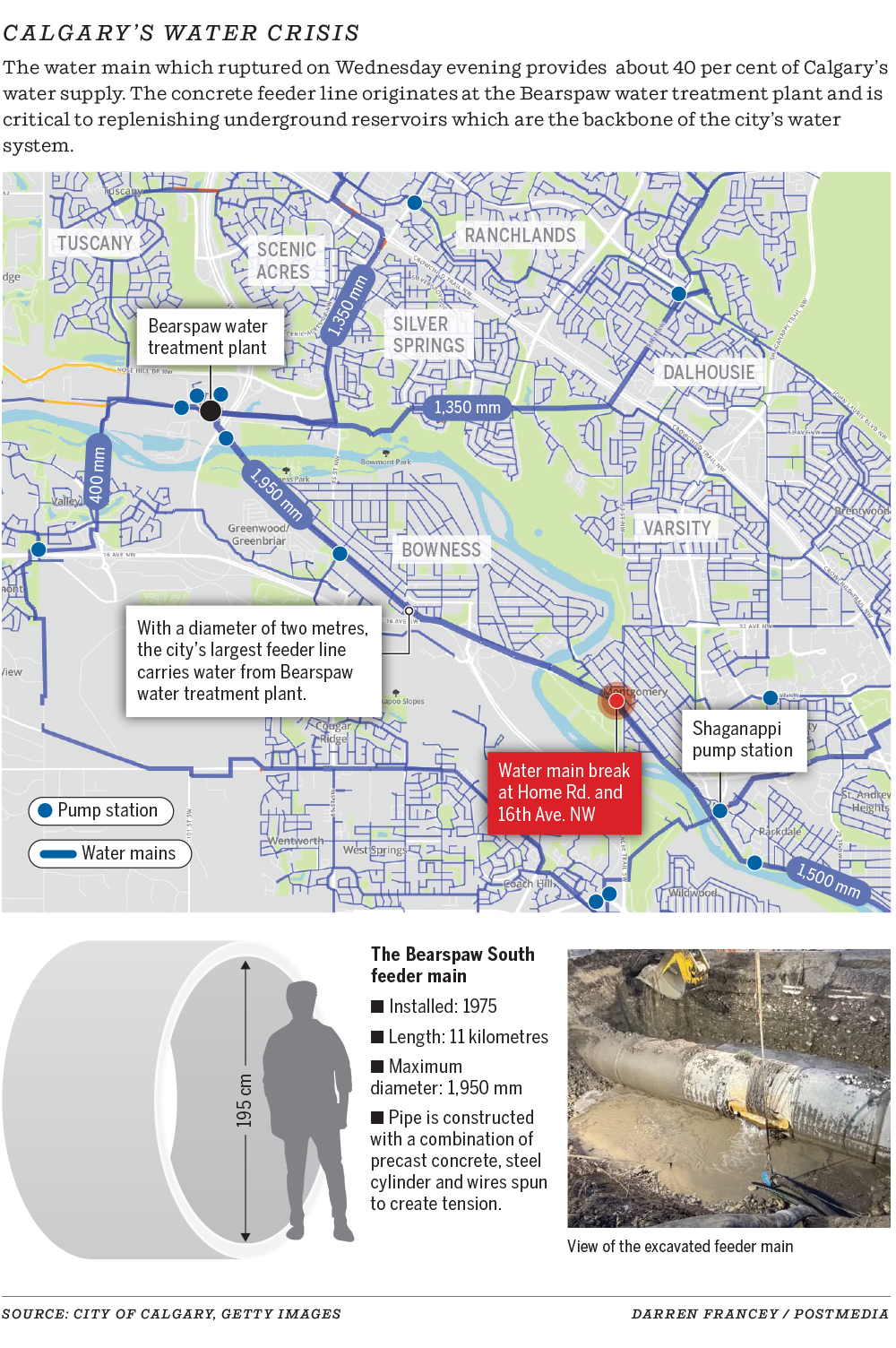On Wednesday about 650 million litres of water were consumed — a number that decreased to 520 million on Thursday, then 484 million on Friday

Calgary residents are urged to continue water conservation efforts as crews repair the massive water feeder main rupture, an ordeal that may continue for five to seven days.
At a Sunday morning press conference, Mayor Jyoti Gondek thanked Calgarians for their efforts in “stepping up and conserving water, for caring about our neighbours in Bowness.”
In terms of the difference Calgarians have made, on Wednesday, June 5 about 650 million litres of water were consumed — a number that decreased to 520 million on Thursday, then 484 million on Friday.
“Yesterday (Saturday) the unverified number I have is that we will be using only 440 million litres,” said Gondek.
“So you can see that your efforts have paid off.”
The average Calgarian uses about 173 litres of water per day, about the equivalent of two full bathtubs, said Gondek.
“When we said to you we need you to do a 25 per cent reduction, and yet we didn’t tell you tangibly what that means — in effect, if you flush the toilet five times fewer, you would accomplish it. If you had two less kitchen sinks full of water, you would accomplish that.”
Mayor vows better communication
“On behalf of the City of Calgary, I also want to apologize to Calgarians. I’m sorry that information has been slow to come, and that it’s been confusing at times,” Gondek said Sunday.
Going forward, she said they will do a much better job explaining what’s happened, the expected timeline to get back to normal and what they need from Calgarians in terms of water conservation.
Beginning Monday, Gondek will be providing an update to Calgarians through a live stream at 8:30 a.m. There will also be emergency operations centre briefings for media at 2 p.m. each day, providing a report on progress.
“These updates will carry on until our water situation returns to normal,” said Gondek.
“It’s time to step up our game. Our communications need to be clear and they need to be plain language.”
Feeder main break affects the whole city, surrounding municipalities
Repairs will involve cutting out the broken portion of the line and lifting in a replacement piece made of steel.
The steel piece will require some welding work to be done on the inside and outside of the existing concrete pipe, said Gondek.
An epoxy-type material will be applied as a “sealant”, and after remaining in a tent to keep heat in for a tight seal, the pipe will need to be “flushed”, removing any debris and ensuring its safety.
“This is all going to take – at minimum – five to seven days. This is a really big repair job, because this piece of infrastructure is so big and that feeder main is a major artery,” said Gondek.
Drawing water from the Bearspaw Reservoir, the broken feeder main delivers water to 60 per cent of Calgary, feeding reservoirs in 23 locations throughout the city.
“They are underground, sometimes under soccer fields, and imagine now that you’ve got this tank that’s full and people are drawing on it,”
“It’s slowly, slowly coming down, once it’s empty it can’t be refilled because the feeder main is broken,” said Gondek.
“That’s why we could run out of water, that’s why this situation is so critical.”
The backup plan in place currently is using the Glenmore Water Treatment Plant’s series of pipes to push water up to those 23 reservoirs and bolster supply – that treatment plant normally handles the other 40 per cent of the city.
“This feeder main break affects the whole city and surrounding municipalities that rely on us for water,” said Gondek.
